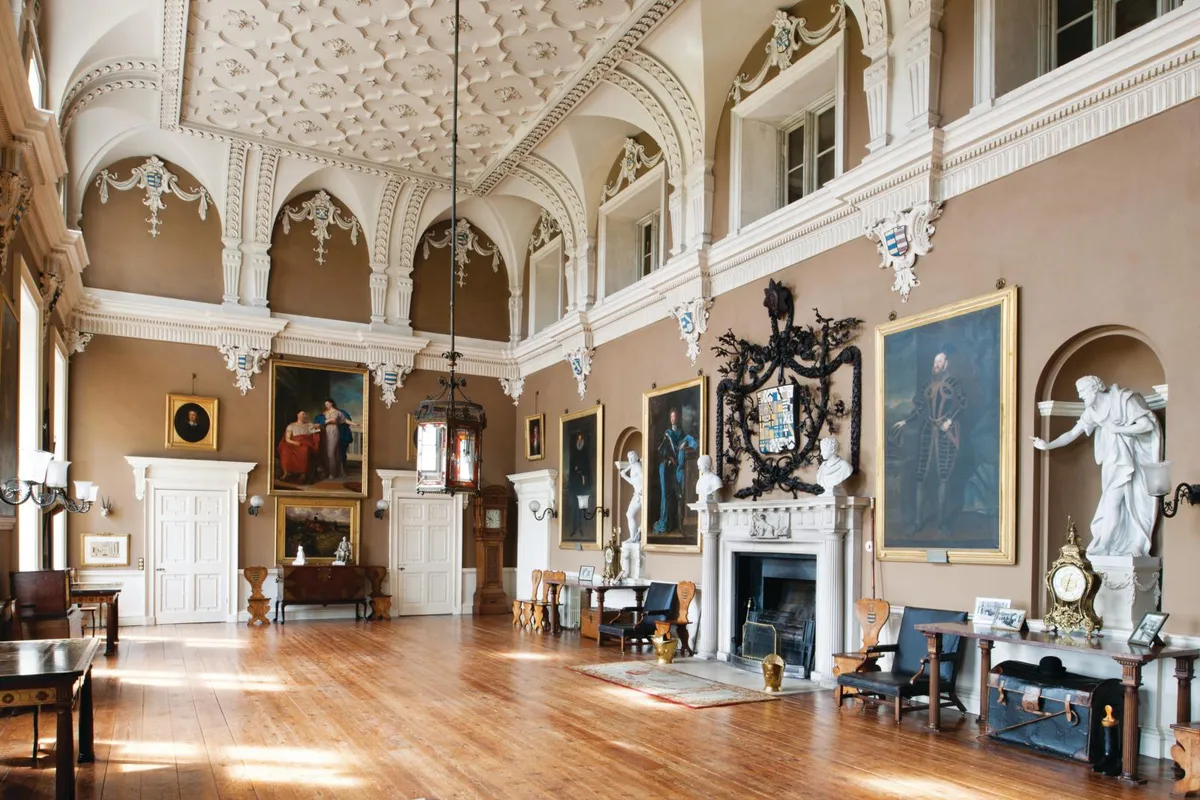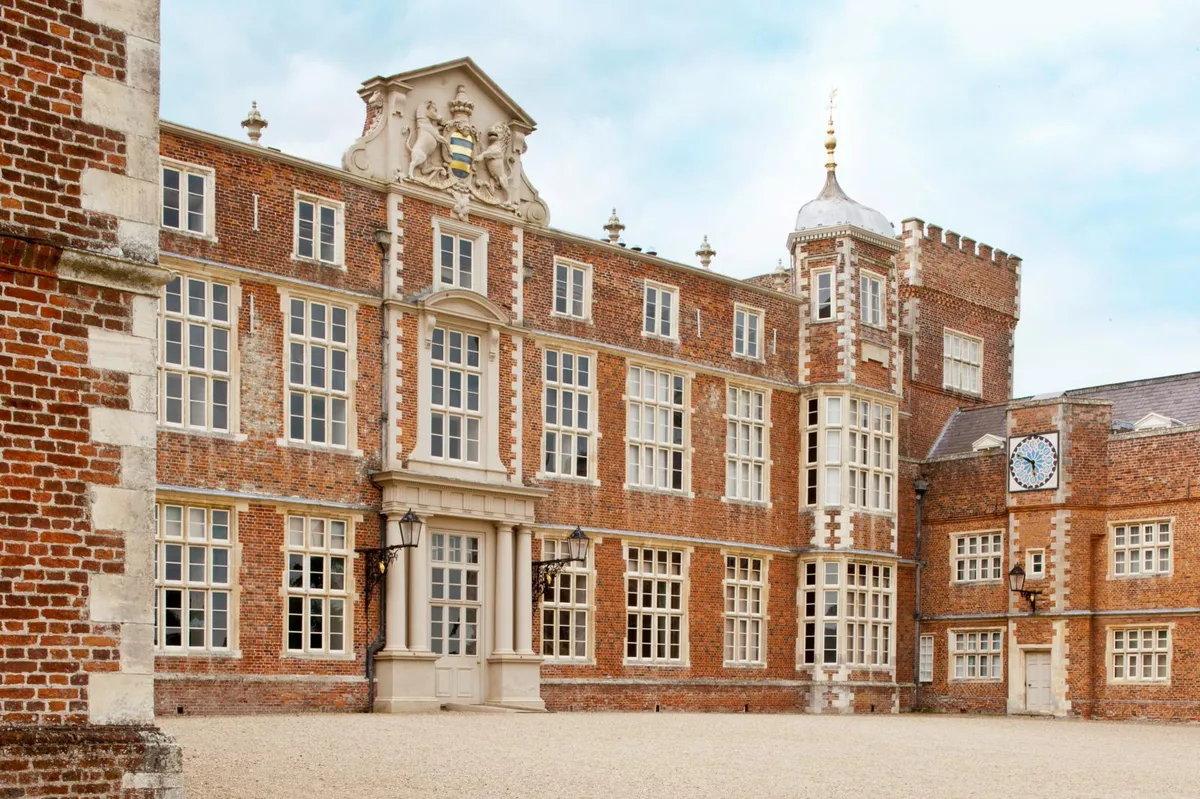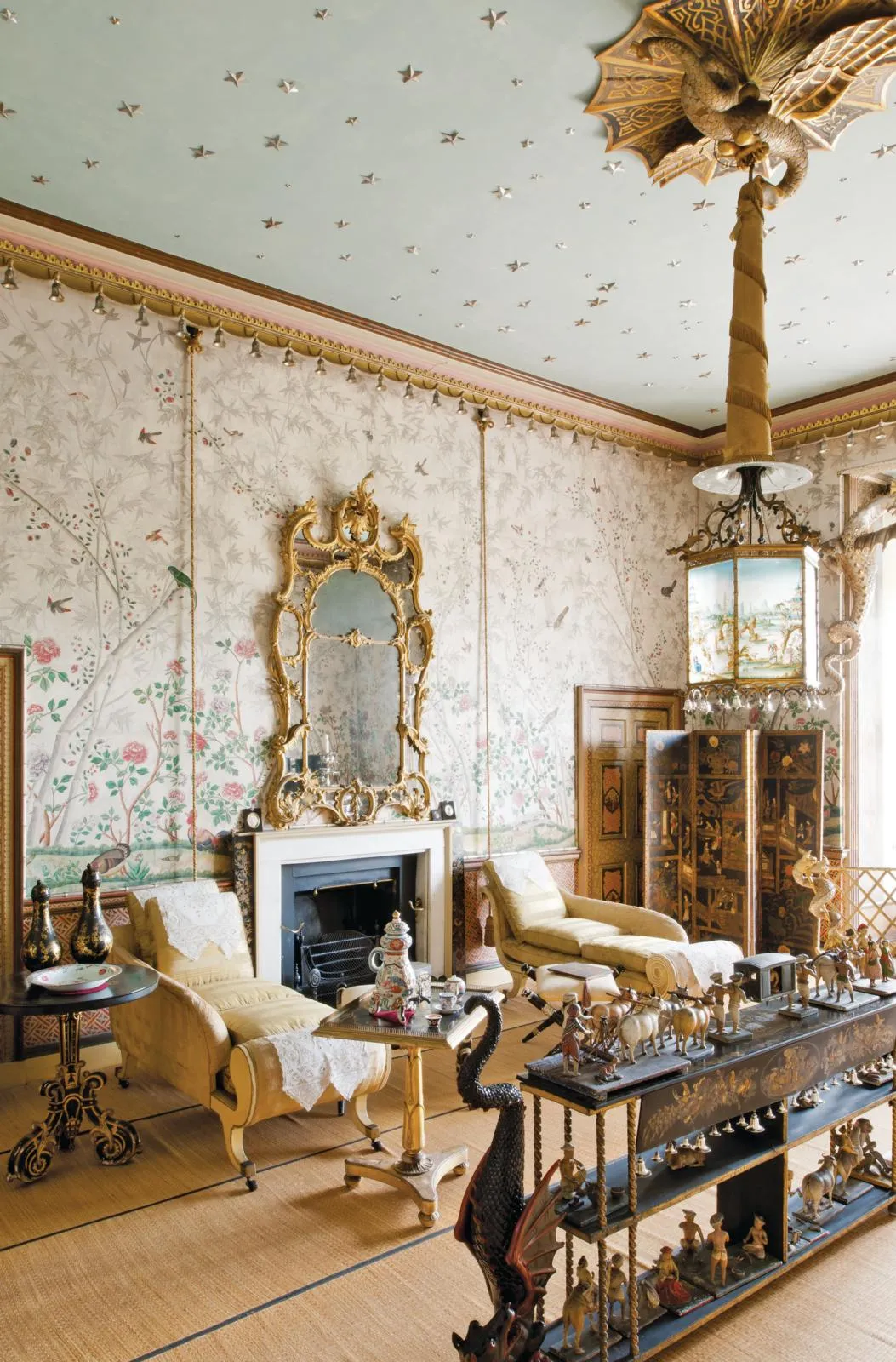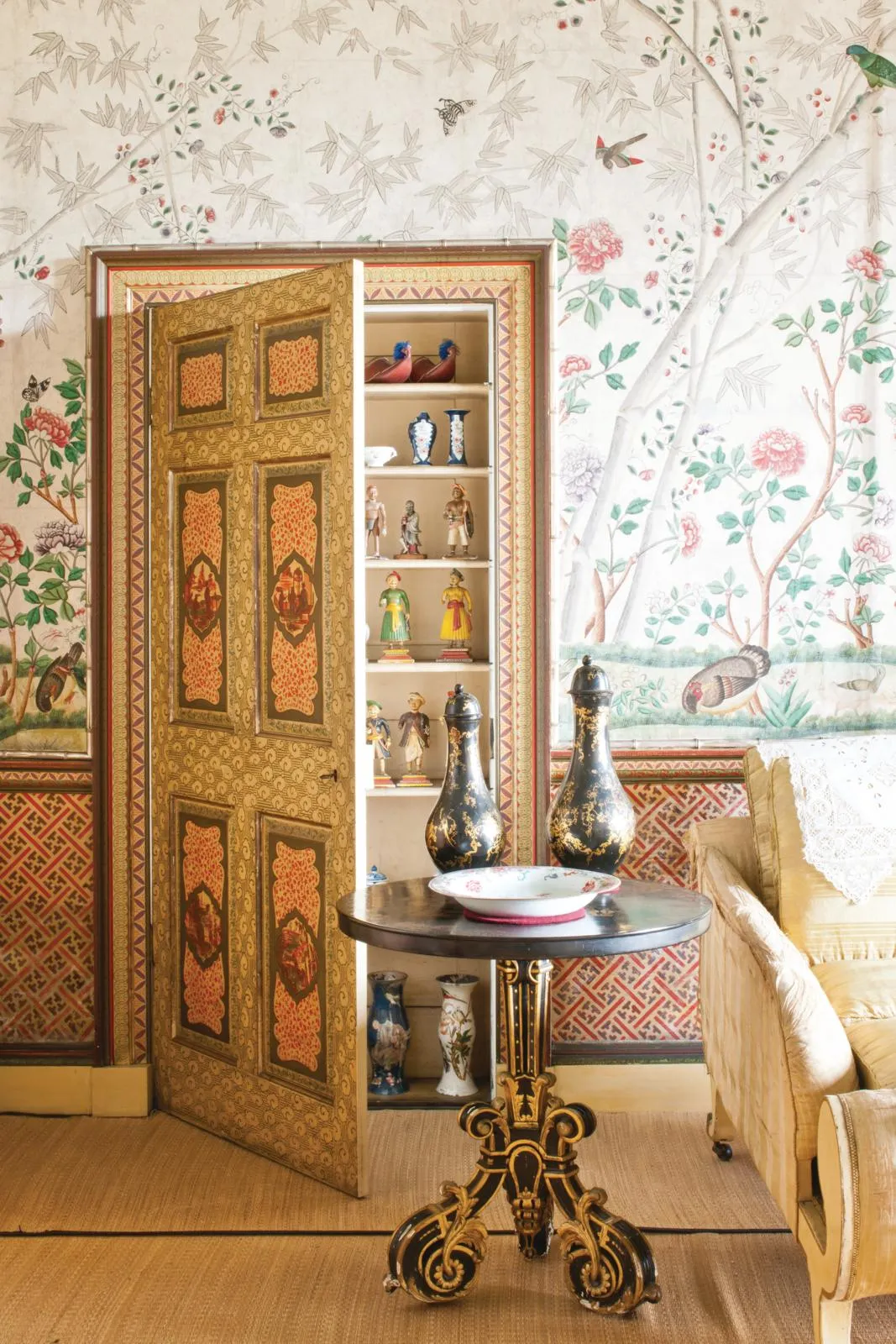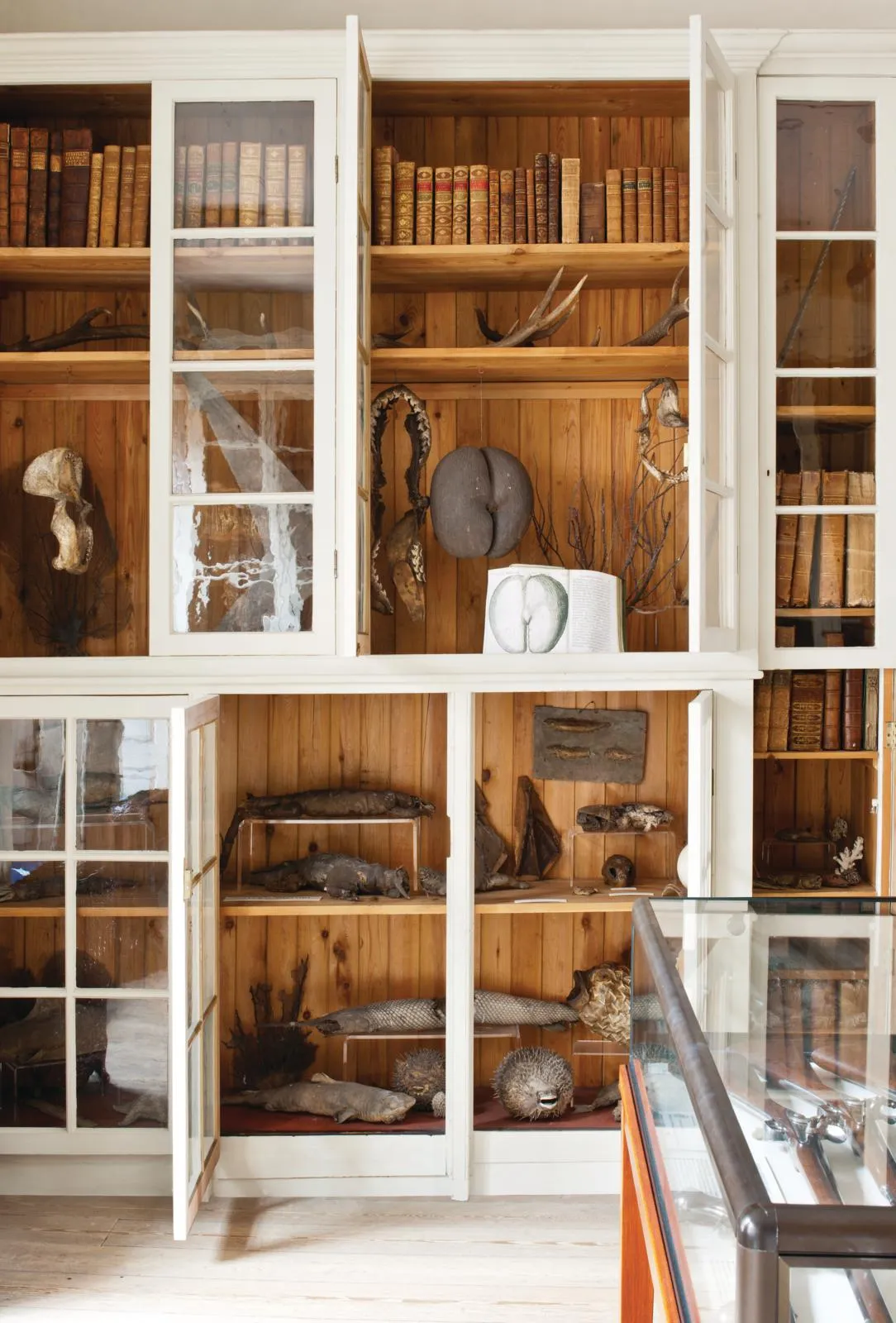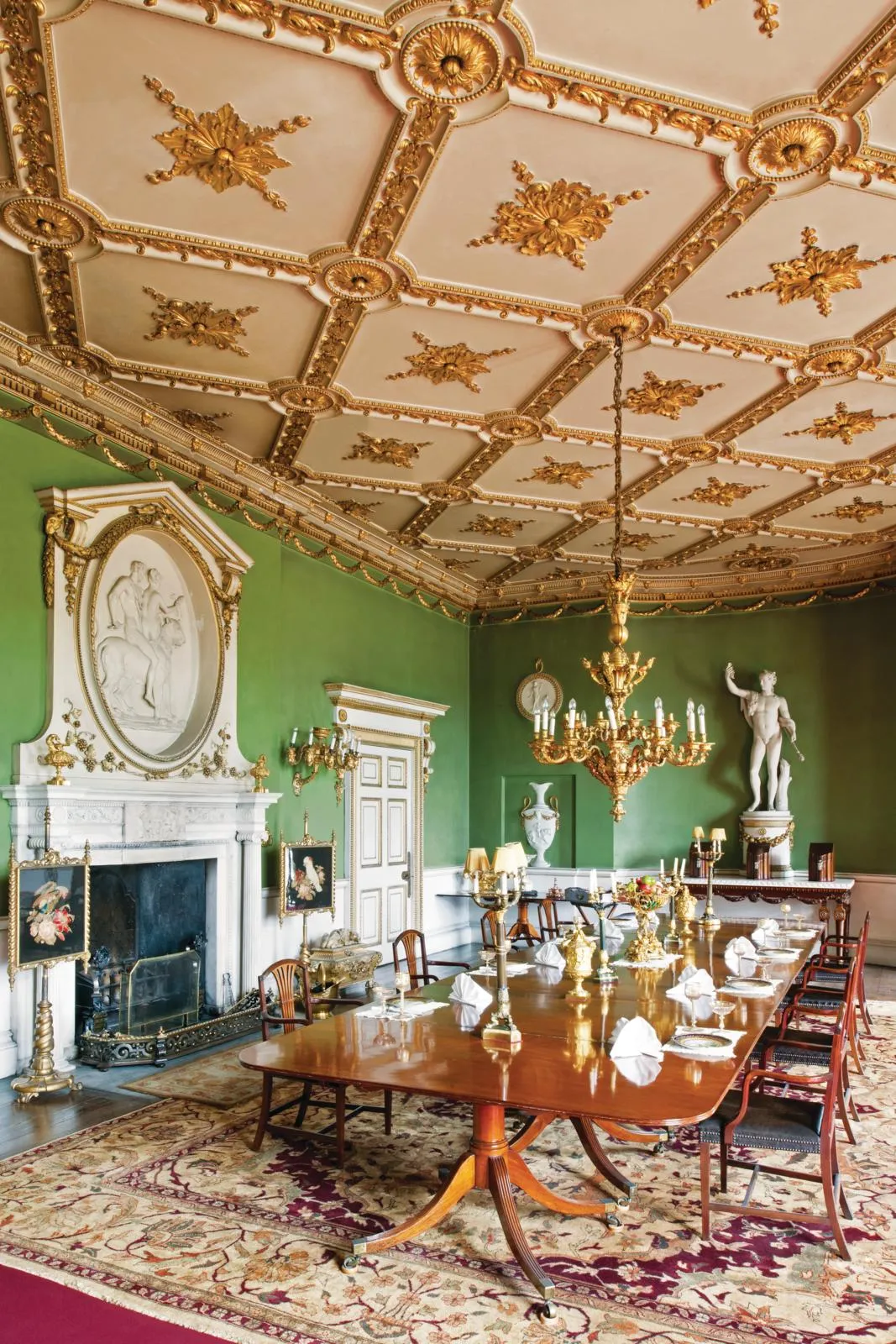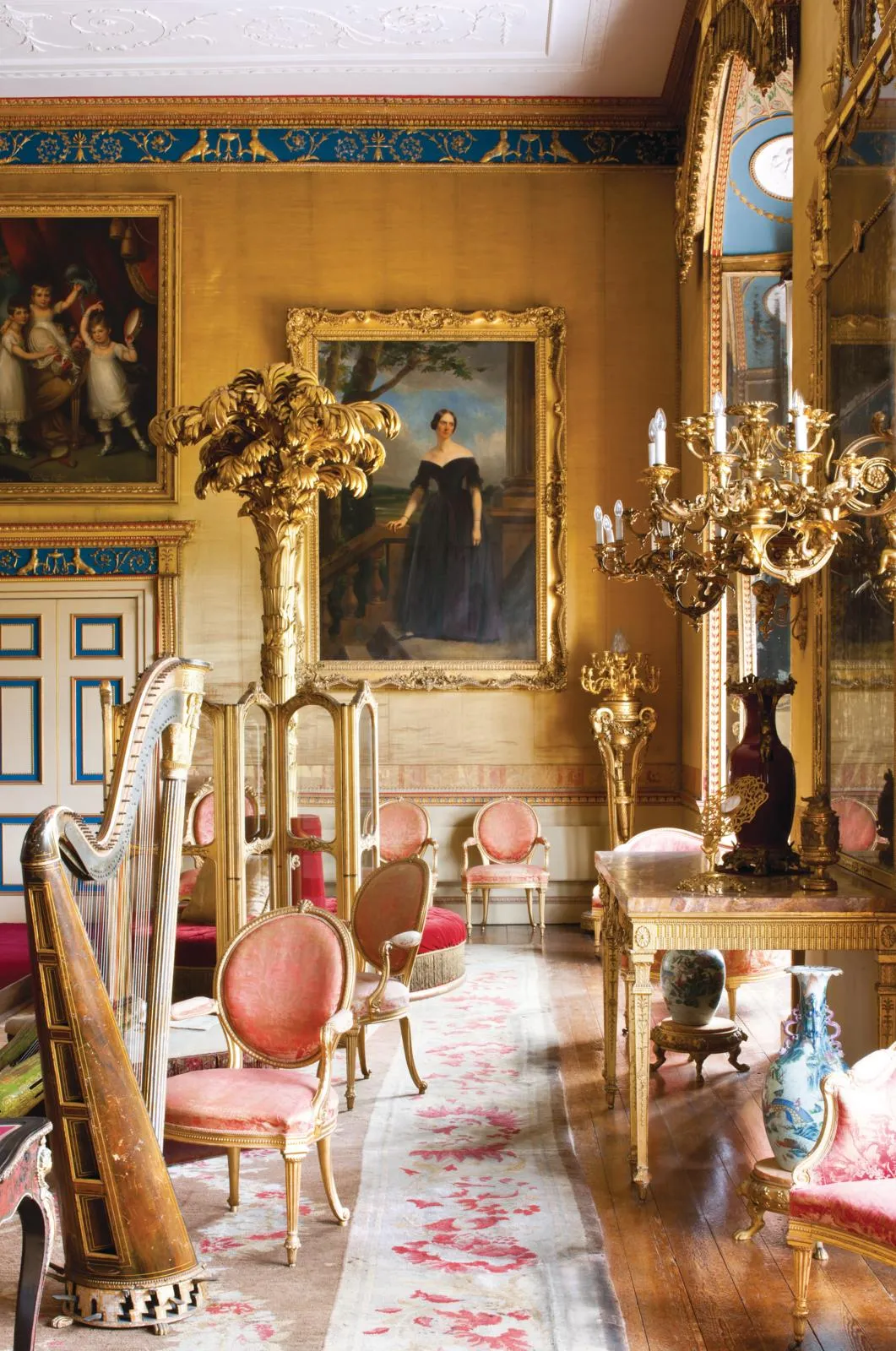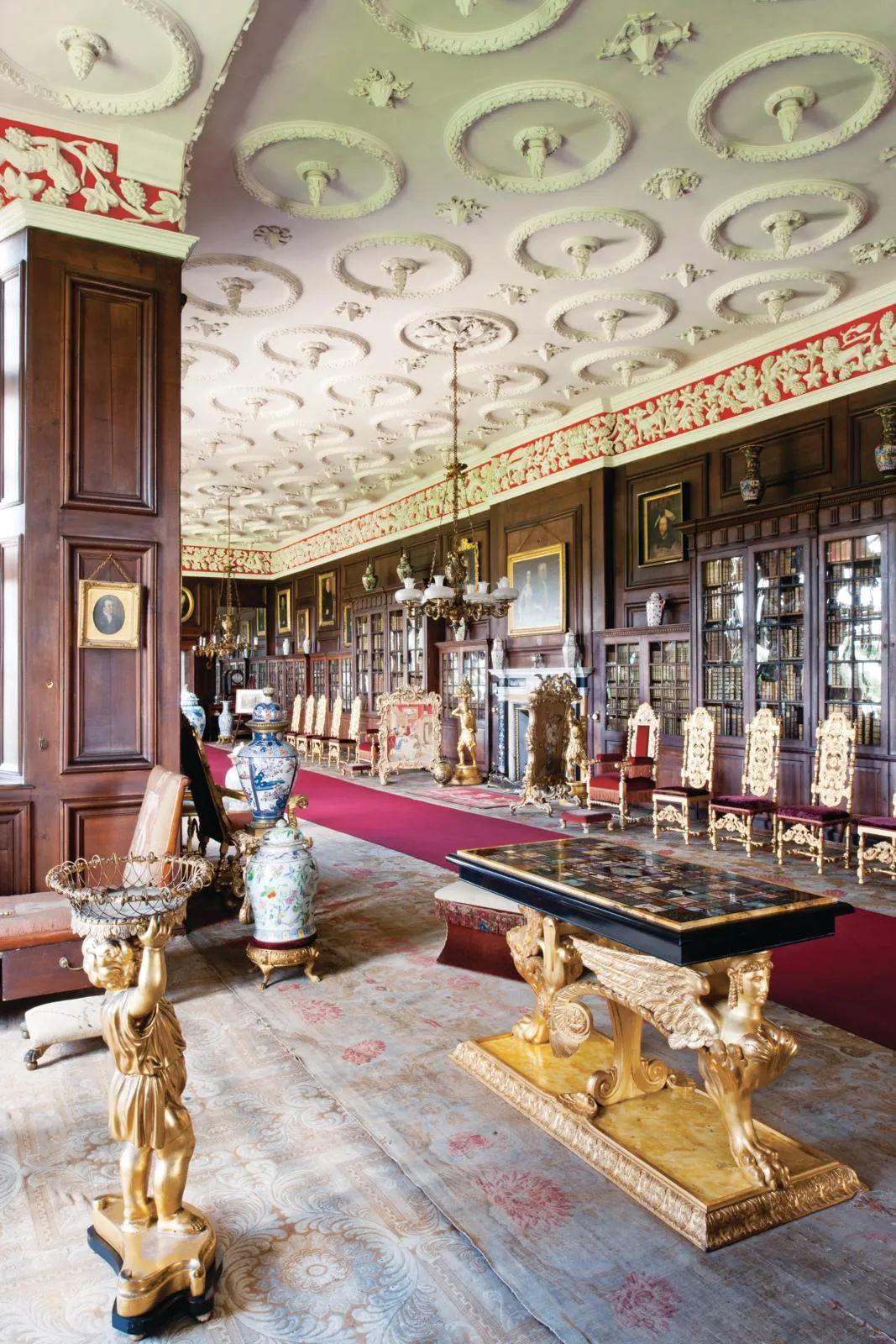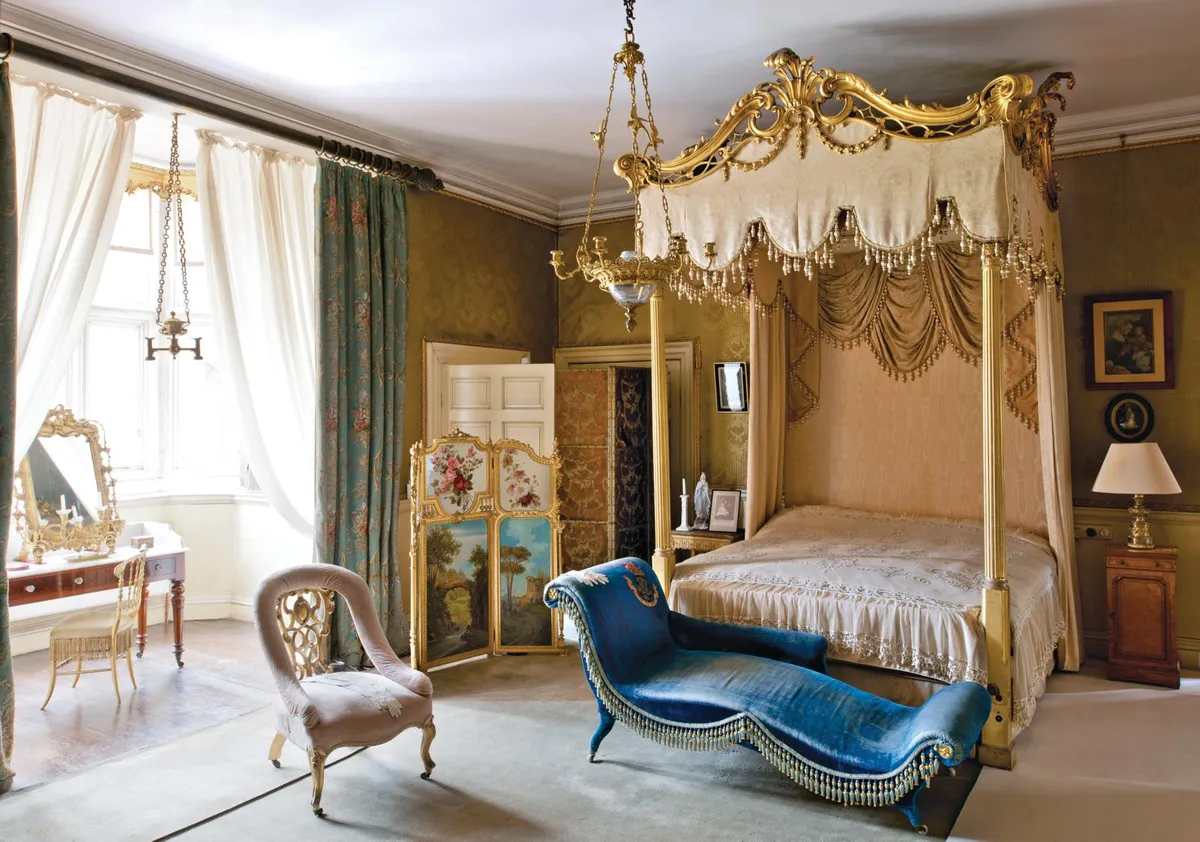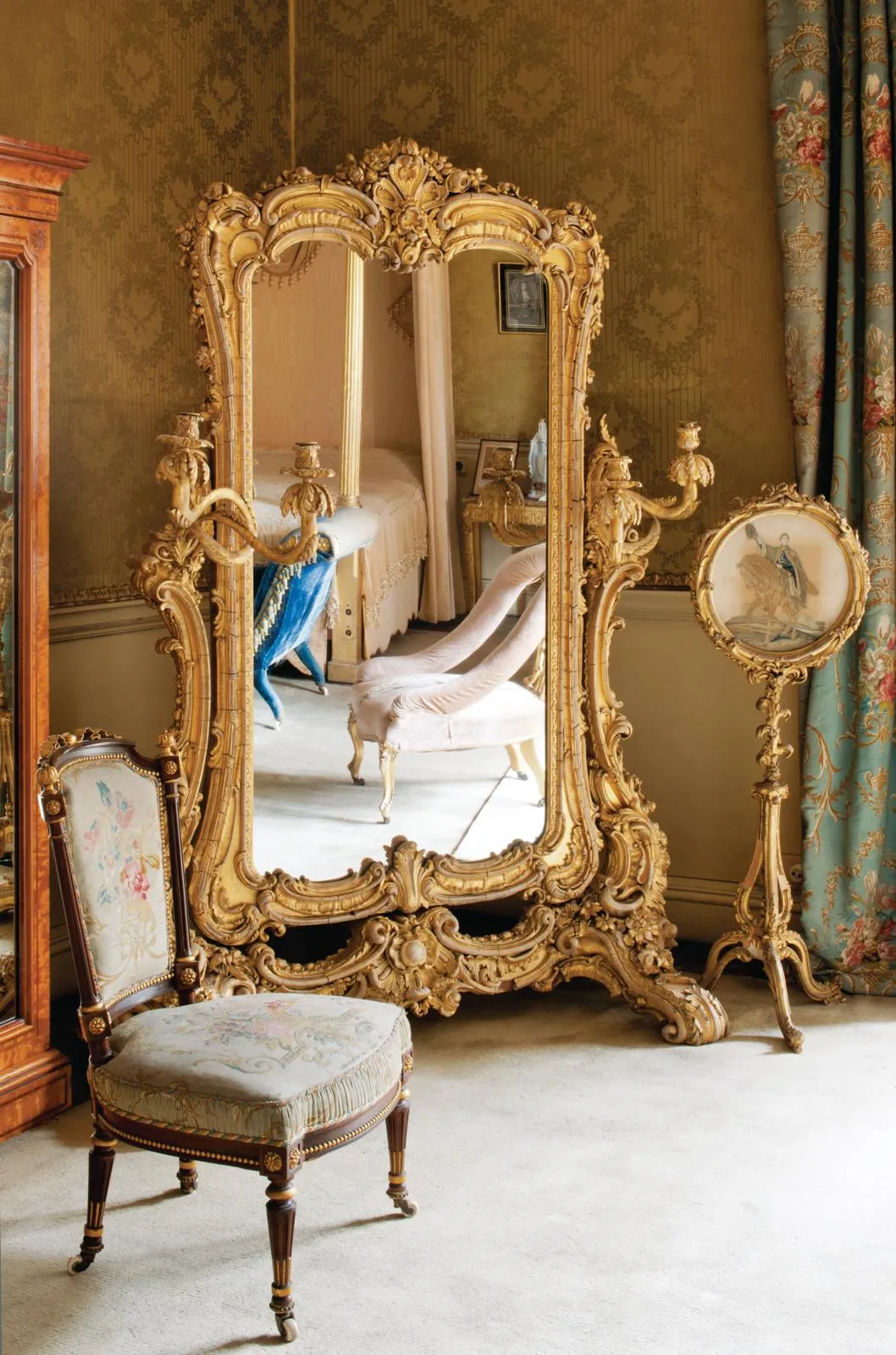Two huge dragons, each one the size of a well-built man, clamber up the windows, their gilded tails spiralling down the window bay. Beneath them, smaller dragons twist across an outlandish chair, rearing from the floor, eyes glaring across the back splat.
Another beast, bat-like wings outspread, supports the lantern in the centre of the room, while yet more perform handstands to guard a bell-fringed shelf of exotic ornaments, and serve as tie-backs to the curtains at the door.
Even before you enter the whimsical Chinese Room at Burton Constable, there is a sense that fantasy rules and nothing is as it seems. ‘It’s impossible not to love it – it’s a whole world and it’s wonderful,’ says Rodrica Straker, a descendant of the Constable family, members of which have lived here for 700 years.
You might also like inside Highclere Castle
The rambling house that lies on the flat plains of East Yorkshire, 10 miles from Hull, was Rodrica’s home during her childhood, and she now lives in the south wing. ‘Not many children grow up in such an eccentric sprawling house as this, and it was magical,’ she recalls.
For her father, John Chichester-Constable, who inherited the house in 1963, the building presented a challenge rather than a playground. On the verge of dereliction, Burton Constable had suffered from wartime requisition – German bombs had blown out windows and doors, and the roof was in a perilous state of disrepair.
Determined to save the family home, her father enlisted the support of English Heritage and embarked on a lengthy programme of restoration. In 1992 the National Heritage Memorial Fund bought the house and parkland and set up the Burton Constable Foundation, an independent charitable trust that continued the restoration.
Although work is still ongoing, these days Burton Constable’s future is safe and it ranks as one of Britain’s most fascinating yet forgotten country houses. With more than 30 rooms open to the public, original Elizabethan architecture combines with overlays from later centuries.
‘Embellishing my place with taste and propriety and magnificence,’ was the self-stated mission of William Constable, who lived here in the 18th century. As a member of a recusant Catholic family, William was barred from public office. Anxious to present himself as a man of status and refinement, he sought advice from James Wyatt and Capability Brown (who designed the park).
Eventually he chose architect Timothy Lightoler to give the house a fashionable makeover, moving the front door of the Elizabethan Great Hall, but embellishing the rooms with an 18th-century vision of 17th-century-style details.
William patronised many leading craftsmen of the day, among them Thomas Chippendale. His fondness for classical antiquity lies behind many of his acquisitions. In the Dining Room, a pair of panther-topped cellarets are fashioned as classical sarcophagi, and the walls are embellished with stucco panels revealing Bacchic scenes.
You might also like a tour of Chatsworth House
William was also a passionate amateur scientist and the Museum Room holds the most complete cabinet of curiosities in any British country house. Cases brim with rocks, fossils, minerals, shells and a rare equatorially mounted telescope made by one of the most highly skilled, but uncelebrated clockmakers of the 18th century, Henry Hindley of York.
‘We still don’t know how he managed to create such amazingly accurate instruments,’ says the hall’s curator, Kelly Wainwright.
Subsequent members of the family followed William’s collecting lead. Among the most important items of furniture in the house is a pair of early 19th-century tables with marble tops by Giacomo Raffaelli and sphinx bases by Giuseppe Leonardi.
The tables were brought back by Sir Clifford Constable and his wife Marianne when they visited Rome during their honeymoon. On their return, the couple redecorated the Great Drawing Room, installing an extraordinary ottoman sprouting an enormous gilded palm tree.
It was Marianne and her sister Eliza who created Burton Constable’s most imaginative interior – the wonderful Chinese Room. ‘Marianne designed the dragon chair,’ says Wainwright. ‘It was carved by a local craftsman who was serving his apprenticeship and walked here every day from Hull.’
A holiday in Brighton had inspired the sisters to try and create their own exotic domain. A confection of Japanese lacquer, Chinese wallpaper, Indian ornaments, oriental porcelain and a cornice of silver bells, juxtaposed with carved dragons, helped them to succeed spectacularly.
